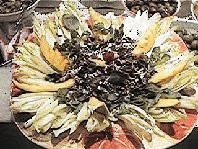 Demonstrating the adage that any team can win on any given day, the SAE softball team turned the tables on undefeated league favorite American Eagle last Thursday at Knob Field and claimed its first victory of the season, 12-10.
Demonstrating the adage that any team can win on any given day, the SAE softball team turned the tables on undefeated league favorite American Eagle last Thursday at Knob Field and claimed its first victory of the season, 12-10. After showing improvement in each of its first two games, SAE finally jelled in all phases, collecting a season-high 21 hits and playing a near-perfect game in the field.
For the second game in a row, SAE jumped out to an early lead, posting four runs in the top of the first inning. George Hoffman set the tone with a leadoff triple and later scored the first of his three runs for the game.
Trailing 5-2 after the first two innings, AE shifted momentum in its favor, evening the score in the third before pulling ahead 7-5.
After a bit of lively debate over some close calls in the fourth inning and what was perhaps a game-saving catch in right field by Theresa Anzaldi, SAE reclaimed momentum and jumped ahead for good with a four-run sixth inning.
SAE was led offensively by Jeff Worsinger—4 for 4, three RBI, two runs scored—and Hoffman, who went 3 for 4 with an RBI. Tim Davison, Jim Lewis, and Doug Shymoniak each contributed two hits.
Rhonda Buzard and Frank Bokulich shared pitching duties and helped frustrate AE batters throughout the game.
SAE (1-2) looks to even its record Friday June 23rd at Knob Field against North Pittsburgh Systems.
 Demonstrating the adage that any team can win on any given day, the SAE softball team turned the tables on undefeated league favorite American Eagle last Thursday at Knob Field and claimed its first victory of the season, 12-10.
Demonstrating the adage that any team can win on any given day, the SAE softball team turned the tables on undefeated league favorite American Eagle last Thursday at Knob Field and claimed its first victory of the season, 12-10. 












